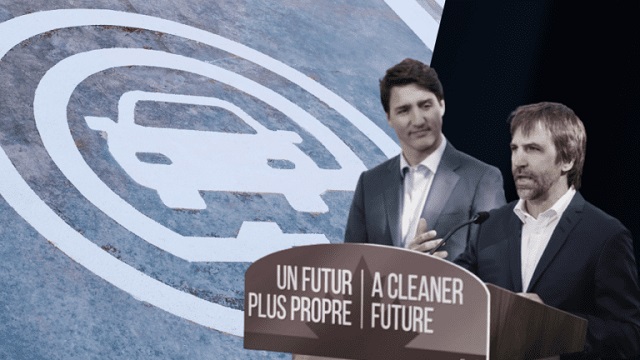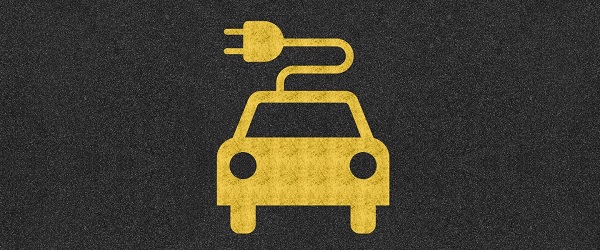Automotive
The government’s zero-emission vehicles mandate is an arrogant, unnecessary gamble

From the MacDonald Laurier Institute
By Jerome Gessaroli
This poor policy will disproportionately hurt middle- and working-class Canadians.
In December 2023, Steven Guilbeault, the federal minister of environment and climate change, announced that all new auto sales in Canada must be zero-emission vehicles by 2035. The Liberal government’s mandate to restructure the auto sector is industrial policy on a massive scale. Whether one agrees or disagrees with the mandate, there is general consensus on the substantial nature of this government intervention.
Many people write about whether wholesale government mandates will benefit or harm Canadians. Pundits of all stripes invoke their favoured political and economic ideologies (whether it is capitalism, command socialism, dirigisme, or economic nationalism) when discussing the government’s actions. When evaluating the efficacy of these government mandates, I will refrain from using polarizing labels and instead apply a first principles approach to assess how successful products, markets and entire industries are created.
To illustrate this approach, I reference a classic essay written in 1958 by Leonard E. Read, “I, Pencil.” In this essay, Read questions whether anyone truly knows how to produce a pencil from scratch, a simple commodity that has been mass-produced for over 300 years.
Read describes a pencil’s components, including wood, lacquer, graphite, a bit of metal, an eraser, and labelling. He delves into the intricacies of each element needed for pencil production. For instance, harvesting wood involves using saws, trucks, railcars, radios, and other equipment. The extensive skills, knowledge, and capital needed to design and manufacture this equipment are immense. Motors, railcars, trucks, and radios all require mining and refining ores, engineering design, manufacturing, distribution, and deployment, just so loggers can do their job.
After the wood arrives at the sawmill, it is cut, machined, and dried. The equipment and expertise needed for this second step are too long to list. Power for the mill and kiln, generated by a hydroelectric dam and transmitted through power lines, requires its own design, construction, and operation—a testament to human ingenuity.
The pencil’s graphite must be mined and imported. Transforming raw graphite into the final pencil material involves mixing it with various compounds at the mine site, moulding, cutting, multiple drying rounds, and quality checks. The graphite then travels to the pencil plant, where it undergoes further mixing, moulding, and cutting and is then placed inside the pencil. Chemists, manufacturing engineers, production workers, millwrights, and truck drivers, not to mention the specialized equipment for graphite manufacturing, all play crucial roles in this intricate process.
The pencil lacquer, made up of various compounds, is applied to the wood, and then the pencil runs through a specialized machine multiple times to get the desired finish. Inputs, including the chemical process, labour, and co-ordination for this procedure are too lengthy to detail. The aluminium band around the pencil serves to secure the eraser.
The eraser must be abrasive enough to remove the graphite from the paper without damaging the paper itself. Over time, chemists have changed the eraser’s composition, using their knowledge of polymers and other chemicals. The intricate production of a simple pencil requires diverse material inputs from various sectors and production processes, all of which must be cost-efficient to keep the pencil’s cost very low.
The collective knowledge, capital, and materials needed to produce a pencil are dispersed among millions of individuals and companies throughout society. No single person, even the CEO of a pencil company, possesses anything but a tiny fraction of the knowledge needed to make a pencil.
Despite this diffusion, spontaneous order emerges, driven by individuals pursuing their own interests, needs, and wants. As Read argues, those involved in the pencil’s production from miners, loggers, and engineers to CEOs, perform their tasks not because they desire a pencil but for other motivations. Instead, each participant exchanges their specific ability for the goods and services they need, with the pencil potentially being one of many items in this exchange.
Creating a zero-emission vehicle sector is vastly more complicated than a pencil. Given this complexity, the feasibility of any single entity, including the government, to successfully direct an auto sector restructuring is doubtful. Sustainably producing zero-emission vehicles instead will require decisions, capital, and resources dispersed throughout society that spontaneously arrange themselves in a manner that responds to the demand for such vehicles.
The federal government has assured Canadians that they will help with this transition, primarily through government subsidies to consumers and businesses. Money is given to subsidize zero-emission vehicle purchases to make them a bit less costly.
A total of $43 billion will be provided by the federal, Ontario and Quebec governments in subsidies for three battery plants, enabling the companies to manufacture batteries profitability. As well, funding is provided for 42,000 electric chargers, which are in addition to the 40 percent of existing chargers that the government has already subsidized to help keep drivers’ vehicles on the road.
The federal government cannot be certain its decisions are correct. It might be better to not subsidize battery plants and instead relax restrictions on supply chain development. This would involve ensuring the supply of critical minerals, chemicals, electrode production, transportation services, testing equipment, recycling, and more.
The government’s approach bypasses the price system and diverts money from its best use. The subsidies are artificial. While companies may initially react to these subsidies, their response is contingent upon the government’s continued support.
Without the millions of people making individual decisions that are spontaneously organized through the price system to create a sustainable zero-emission car market, the federal government’s mandate will likely fail.
It is the height of hubris to assume that the government can restructure the auto industry in such a fundamental way. More likely, the massive subsidies will financially burden Canadians for many years, leading to a disarray of misallocated resources that will take years to correct. Indeed, the Parliamentary Budget Office estimates that the debt charges for the federal and participating provincial governments subsidizing battery manufacturing will increase the total cost by $6.6 billion over 10 years.
This poor policy will disproportionately hurt middle- and working-class Canadians, through lower employment and higher taxes that would otherwise be unnecessary.
Jerome Gessaroli is a senior fellow at the Macdonald-Laurier Institute and leads The Sound Economic Policy Project at the British Columbia Institute of Technology.
Automotive
Big Auto Wants Your Data. Trump and Congress Aren’t Having It.


From the Daily Caller News Foundation
Congress is not going to allow Big Auto to sideline consumer privacy and safety while getting subsidized massively by the federal government.
That is because, in late September, by an overwhelming vote of 50 to 1, Chairman Brett Guthrie’s (R-KY) House Energy & Commerce Committee joined the Senate Commerce, Science, and Transportation Committee in passing the AM Radio for Every Vehicle Act.
This legislation is in response to some automakers removing AM radios from new model vehicles despite pleas from America’s public safety community not to do so.
Dear Readers:
As a nonprofit, we are dependent on the generosity of our readers.
Please consider making a small donation of any amount here.
Thank you!
“They’d rather force consumers to use their infotainment devices — which collect and sell their third-party data — than protect American lives,” Corey Lewandowski, President Trump’s 2016 campaign manager and senior adviser to his 2020 and 2024 campaigns, stated.
The entirety of America’s public safety community spanning the federal, state, and local levels, insists AM radio remaining in cars is critical for protecting the nation’s emergency alerting systems. These systems rely heavily upon AM radio, the only communication method that has stayed reliably accessible during many disasters such as the Sept.11 terrorist attack and major disasters like Hurricanes Katrina, Sandy, and most recently, Helene.
Brendan Carr, the current chairman of President Trump’s FCC, nominated by President Trump, has also endorsed the AM Radio for Every Vehicle Act. In a statement, Carr said that “millions of Americans depend on the value of AM radio and the local news that AM broadcasters offer in communities across the country.” He also recounted hearing firsthand stories of Hurricane Helene victims who “could only access lifesaving information in the days following the storm by tuning into their AM radios.”
AM radio also serves another purpose that the elites in Silicon Valley and Detroit often forget: it keeps rural and working-class America connected. Millions of people outside the big cities rely on AM for local news, farm reports, weather alerts, and even community events. For many small towns, AM stations are a lifeline—far more reliable than expensive streaming services or spotty cell coverage. Pulling it out of cars is yet another way of telling Middle America: “you don’t matter.”
Of course, no good idea in Washington is safe from special interests.
Despite the broad support within Congress, the administration, and throughout the public safety and first responder communities, the bill has faced a full-court press by the musicFIRST Coalition — a group backed by the Recording Industry of America — to tank the legislation unless it is tied to unrelated music royalty reform legislation. That’s cronyism politics at its worst—holding public safety hostage to squeeze out another payday.
However, now that the AM Radio for Every Vehicle Act has passed both committees by overwhelming margins, the only stop left for the legislation is the House and Senate Floor — meaning Speaker Mike Johnson (R-LA) and House Majority Leader John Thune (R-SD) must call it up for a roll call vote.
At the heart of this fight is more than just whether a radio dial stays in your dashboard. It’s about whether Americans can trust that their safety won’t be sacrificed for corporate profit.
It’s also about data privacy. Automakers and Big Tech are eager to funnel drivers into infotainment systems that monitor every move, harvest personal information, and sell it to the highest bidder. AM radio doesn’t spy on you. It doesn’t crash when the grid goes down. It doesn’t put profit ahead of people. It just works.
For the sake of both public safety and personal freedom, Congress should make sure it stays that way.
Ken Blackwell (@KenBlackwell) is an adviser to the Family Research Council and a chair at the America First Policy Institute. He is a former Mayor of Cincinnati, Ohio, Ohio Treasurer and Secretary of State, and U.S. Ambassador to the United Nations Human Rights Commission. He is also a former member of the Trump transition team.
Automotive
Governments continue to support irrational ‘electric vehicle’ policies

From the Fraser Institute
Another day, another electric vehicle (EV) fantasy failure. The Quebec government is “pulling the plug” on its relationship with the Northvolt EV battery company (which is now bankrupt), and will try to recoup some of its $270 million loss on the project. Quebec’s “investment” was in support of a planned $7 billion “megaproject” battery manufacturing facility on Montreal’s South Shore. (As an aside, what normal people would call gambling with taxpayer money, governments call “investments.” But that’s another story.)
Anyway, for those who have not followed this latest EV-burn out, back in September 2023, the Legault government announced plans to “invest” $510 million in the project, which was to be located in Saint-Basile-le-Grand and McMasterville. The government subsequently granted Northvolt a $240 million loan guarantee to buy the land for the plant, then injected another $270 million directly into Northvolt. According to the Financial Post, “Quebec has lost $270 million on its equity investment… but still had a senior secured loan tied to the land acquired to build the plant, which totals nearly $260 million with interest and fees.” In other words, Quebec taxpayers lost big.
But Northvolt is just the latest in a litany of failure by Canadian governments and their dreams of an EV future free of dreaded fossil fuels. I know, politicians say that it’s a battle against climate change, but that’s silly. Canada is such a small emitter of greenhouse gases that nothing it could do, including shutting down the entire national economy, would significantly alter the trajectory of the climate. Anything Canada might achieve would be cancelled out by economic growth in China in a matter of weeks.
So back to the litany of failed or failing EV-dream projects. To date (from about 2020) it goes like this: Ford (2024), Umicore battery (2024), Honda (2025),General Motors CAMI (2025), Lion Electric (2025), Northvolt (2025). And this does not count projects still limping along after major setbacks such as Stellantis and Volkswagen.
One has to wonder how many tombstones of dead EV fantasy projects will be needed before Canada’s climate-obsessed governments get a clue: people are not playing. Car buyers are not snapping up these vehicles as government predicted; the technologies and manufacturing ability are not showing up as government predicted; declining cost curves are not showing up as government predicted; taxpayer-subsidized projects keep dying; the U.S. market for Canada’s EV tech that government predicted has been Trumped out of existence (e.g. the Trump administration has scrapped EV mandates and federal subsidies for EV purchases); and government is taking the money for all these failed predictions from Canadian workers who can’t afford EVs. It really is a policy travesty.
And yet, like a bad dream, Canada’s governments (including the Carney government) are still backing an irrational policy to force EVs into the marketplace. For example, Ottawa stills mandates that all new light-duty vehicle sales be EVs by 2035. This despite Canadian automakers earnest pleas for the government to scrap the mandate.
Canada’s EV policy is quickly coming to resemble something out of dysfunctional-heroic fiction. We are the Don Quixotes, tilting futilely at EV windmills, and Captain Ahabs, trying to slay the dreaded white whale of fossil-fuelled transportation with our EV harpoons. Really, isn’t it time governments took a look at reality and cut their losses? Canada’s taxpayers would surely appreciate the break.
-

 Red Deer5 hours ago
Red Deer5 hours agoThe City of Red Deer’s Financial Troubles: Here Are The Candidates I Am Voting For And Why.
-

 International2 days ago
International2 days agoUS Warns Hamas To Halt Executions
-

 illegal immigration2 days ago
illegal immigration2 days agoLos Angeles declares a state of emergency over ICE deportations
-

 International2 days ago
International2 days agoHamas will disarm or die
-

 Indigenous2 days ago
Indigenous2 days agoConstitutional lawyer calls for ‘false’ claims to end in Canadian residential schools burials
-

 Alberta1 day ago
Alberta1 day agoPremier Smith addresses the most important issue facing Alberta teachers: Classroom Complexity
-

 Alberta1 day ago
Alberta1 day agoAlberta taxpayers should know how much their municipal governments spend
-

 Business2 days ago
Business2 days ago‘Taxation Without Representation’: Trump Admin Battles UN Over Global Carbon Tax





